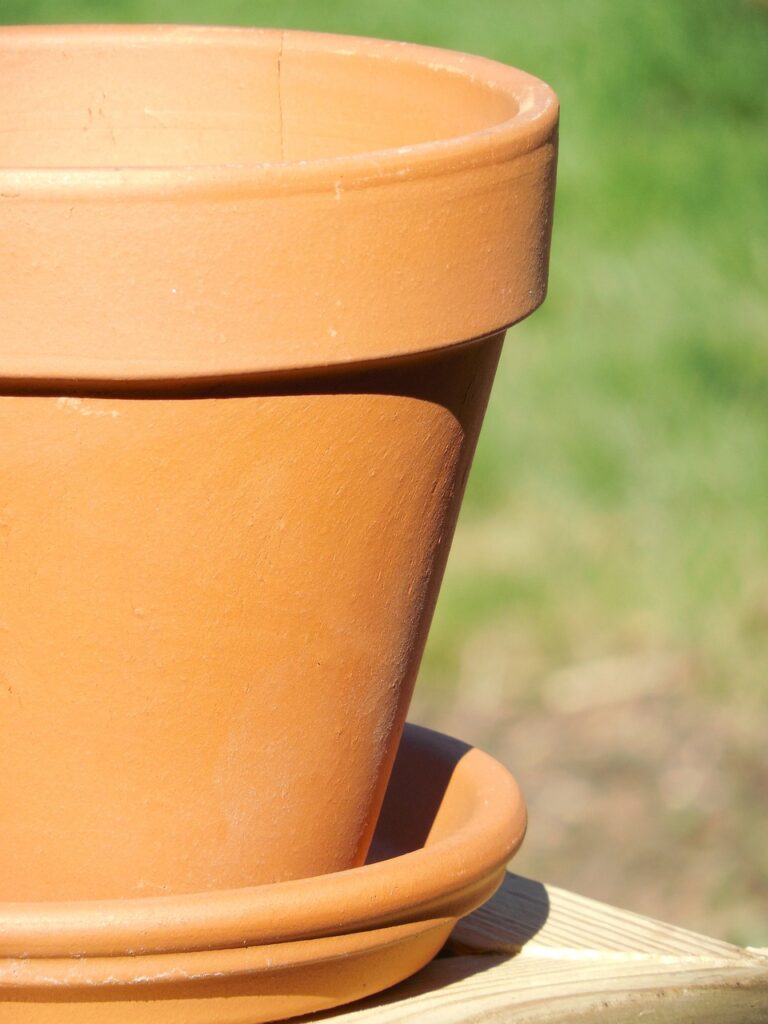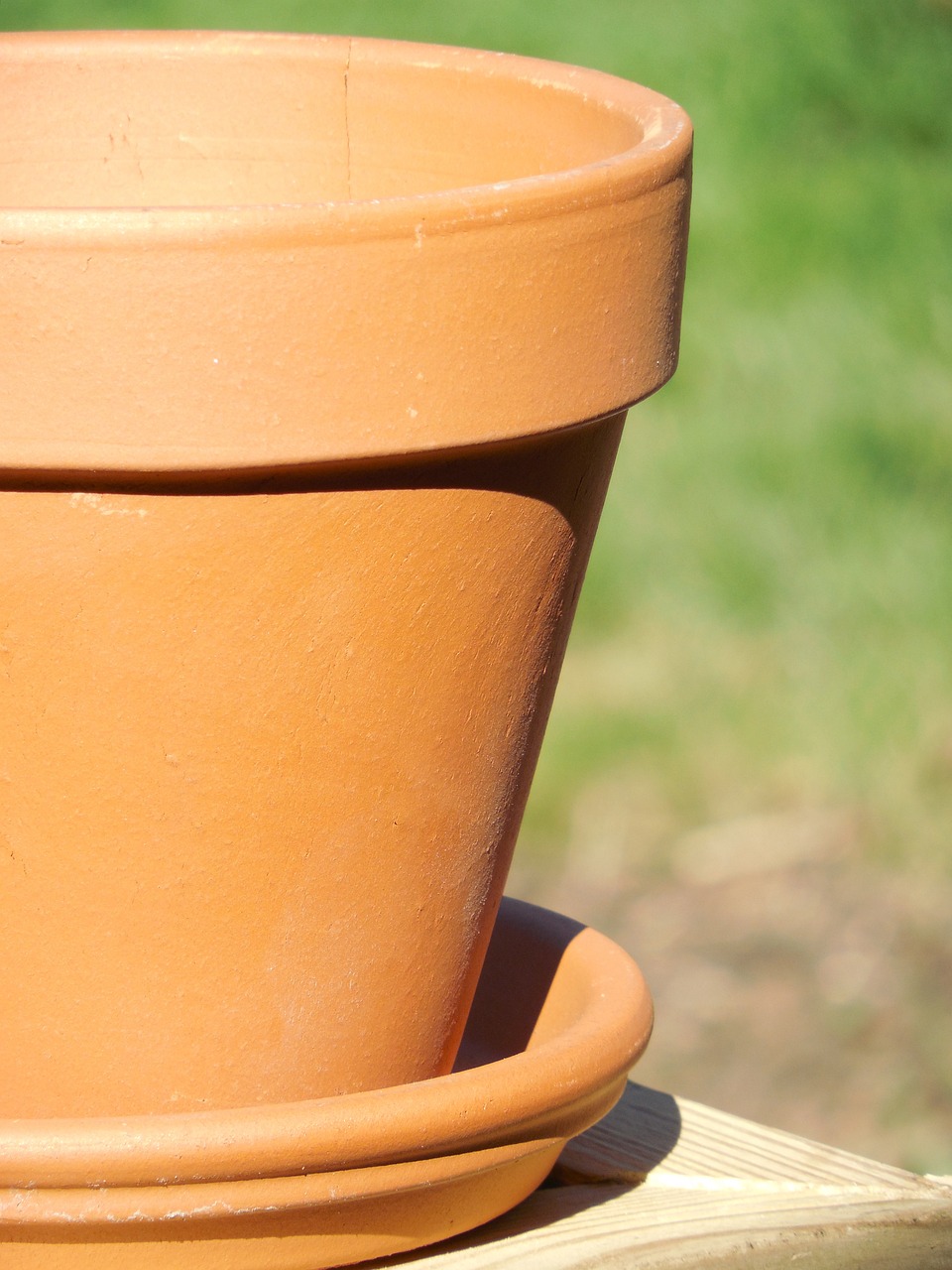Imagine strolling through a stunning garden filled with bursts of vibrant colors, where every step invites you closer to nature’s masterpiece. In our latest article, “Exploring The Beauty Of Circular Flower Gardens: A Visual Delight,” prepare to be captivated by the magical allure of circular flower gardens. Allow yourself to be transported to a world where symmetry meets serenity, as we uncover the secrets behind these breathtaking displays and celebrate the artistry of nature’s brushstrokes. Whether you have a green thumb or simply appreciate the beauty of botanical wonders, this article is sure to leave you in awe of the pure elegance that circular flower gardens offer. Get ready to embark on a visual journey that will leave a lasting impression on your soul.
The History of Circular Flower Gardens
Gardens in Ancient Civilizations
Circular flower gardens have a rich history that can be traced back to ancient civilizations. In ancient Egypt, for example, circular gardens were often created as a symbol of abundance and fertility. They believed that the circular shape represented the cycle of life and growth. Circular flower gardens were also seen in ancient Greece, where they were used as a sanctuary for relaxation and meditation.
Influence of European Garden Design
The influence of European garden design on circular flower gardens cannot be overstated. During the Renaissance period, circular gardens became popular throughout Europe. The idea of symmetry and geometry played a significant role in the design of these gardens. European gardeners often incorporated circular flower beds into their larger garden designs to create focal points and add visual interest.
Modern Interpretations of Circular Flower Gardens
In modern times, circular flower gardens have taken on a new level of creativity and innovation. Many landscape designers and garden enthusiasts have embraced the circular form as a way to create unique and captivating outdoor spaces. These gardens now range from small, intimate spaces to expansive, grand designs. Modern interpretations often combine different elements, such as water features, sculptures, and architectural structures, to enhance the overall aesthetic appeal.
Benefits of Circular Flower Gardens
Creating a Sense of Calm and Serenity
Circular flower gardens have a natural ability to create a sense of calm and serenity. The circular shape is often associated with harmony and balance, which can help create a peaceful atmosphere in your outdoor space. Additionally, the presence of flowers and greenery can have a soothing effect on the mind and body, making circular flower gardens the perfect place to relax and unwind.
Enhancing Visual Appeal
One of the key benefits of circular flower gardens is their ability to enhance the visual appeal of any outdoor space. The circular shape brings a sense of symmetry and order, which can be visually pleasing to the eye. Additionally, the vibrant colors and textures of flowers can create a stunning visual display, turning a simple garden into a work of art.
Maximizing Space Efficiency
Circular flower gardens are also a great way to maximize space efficiency. The circular shape allows for a more efficient use of space as it eliminates awkward corners and maximizes the central area. This is particularly beneficial for small gardens or urban spaces where every inch counts. By utilizing the circular design, you can create a flourishing garden even in limited areas.
Promoting Biodiversity
Circular flower gardens can play a crucial role in promoting biodiversity. By planting a variety of flowers, you can attract different types of pollinators such as bees, butterflies, and birds. This not only adds to the visual appeal of the garden but also contributes to the overall health of the ecosystem. Biodiversity in circular flower gardens can help maintain a balanced ecosystem and support the natural cycles of pollination and reproduction.

Design Elements for Circular Flower Gardens
Choosing the Right Location
When creating a circular flower garden, choosing the right location is vital. Consider factors such as sunlight exposure, soil quality, and drainage. Most flowers thrive in areas with ample sunlight, so selecting a location that receives at least six hours of direct sunlight per day is ideal. Additionally, ensure that the soil is well-drained to prevent waterlogging, which can be detrimental to the health of the plants.
Selecting the Perfect Plants
Selecting the right plants is essential to create a beautiful and flourishing circular flower garden. Consider the climate and local conditions when choosing plants. Opt for a mix of annuals and perennials to ensure year-round blooms. Additionally, choose plants with varying heights and textures to add depth and visual interest to the garden.
Creating Circular Pathways
Circular flower gardens are best complemented by circular pathways. These pathways not only provide easy access to different areas of the garden but also enhance the overall design aesthetic. Use materials such as gravel, mulch, or stepping stones to create the pathways, and add borders or edging to define their shape.
Incorporating Focal Points
Adding focal points to your circular flower garden can create visual interest and draw attention to specific areas. Consider incorporating elements such as sculptures, water features, or architectural structures into the design. These focal points can serve as eye-catching centerpieces and elevate the overall appeal of the garden.
Color Schemes for Circular Flower Gardens
Monochromatic Color Schemes
Monochromatic color schemes in circular flower gardens involve using different shades of a single color. This creates a harmonious and calming effect. For example, a monochromatic color scheme of blues and purples can create a serene and elegant atmosphere. By playing with hues, tints, and tones, you can create a visually appealing garden that feels cohesive and well-balanced.
Complementary Color Schemes
Complementary color schemes involve using colors that are opposite each other on the color wheel. This creates a vibrant and dynamic effect. For example, pairing purple flowers with yellow blooms can create a striking contrast that immediately catches the eye. Complementary color schemes add energy and excitement to a circular flower garden.
Analogous Color Schemes
Analogous color schemes involve using colors that are adjacent to each other on the color wheel. This creates a harmonious and soothing effect. For example, combining different shades of pink, purple, and blue can create a serene and romantic atmosphere. Analogous color schemes provide a cohesive and unified look to a circular flower garden.
Contrasting Color Schemes
Contrasting color schemes involve using colors that are different from each other but still create a visually appealing combination. This creates a bold and dramatic effect. For example, pairing red flowers with white blooms can create a striking contrast that adds a touch of drama to a circular flower garden. Contrasting color schemes create a dynamic and eye-catching display.

Creating Symmetry in Circular Flower Gardens
Using Geometric Shapes
Geometric shapes, such as circles, squares, and triangles, can be used to create symmetry in circular flower gardens. By arranging flower beds, pathways, and focal points in symmetrical patterns, you can create a sense of balance and order. For example, placing identical flower beds on opposite sides of the central area can create a symmetrical design that is visually pleasing.
Balancing Plant Heights and Sizes
To create symmetry in a circular flower garden, it is important to balance plant heights and sizes. Placing tall plants at opposite ends of the garden can create a visually balanced composition. Additionally, consider the growth habits of the plants and ensure they do not overpower each other. By carefully selecting and arranging plants of varying heights, you can achieve a harmonious and symmetrical look.
Dividing the Garden into Sections
Dividing the circular flower garden into sections can help create a sense of order and symmetry. Use pathways, hedging, or decorative elements to separate different areas within the garden. This not only adds visual interest but also allows for the creation of distinct themes or color schemes in each section. Dividing the garden into sections ensures a balanced and cohesive design.
Arranging Plants in a Symmetrical Pattern
Arranging plants in a symmetrical pattern is another way to create symmetry in a circular flower garden. Consider using flower beds or containers of equal size and shape and mirror their placement around the central area. This creates a balanced and harmonious look that is aesthetically pleasing. It is important to maintain regular pruning and trimming to ensure that the symmetrical pattern remains intact as the plants grow.
Tips for Maintaining Circular Flower Gardens
Regular Watering and Fertilizing
Regular watering and fertilizing are essential for the health and vitality of a circular flower garden. Monitor the moisture levels in the soil and water the plants accordingly. Fertilize the garden with a balanced fertilizer to provide essential nutrients for growth. It is important to follow the specific watering and fertilizing requirements of the plants in your garden for optimal results.
Weeding and Pest Control
Regular weeding is necessary to keep the circular flower garden looking neat and tidy. Remove any unwanted weeds that may compete with the plants for nutrients and space. Implement pest control measures to protect the plants from common garden pests, such as aphids, snails, and caterpillars. Regularly inspect the plants for signs of pest infestations and take appropriate action to prevent further damage.
Proper Pruning and Deadheading
Proper pruning and deadheading are essential for maintaining the shape and appearance of the circular flower garden. Remove dead or diseased plant material to prevent the spread of diseases and promote healthy growth. Prune the plants to maintain their shape and control their size. Deadhead flowers regularly to encourage continuous blooming and prevent the formation of seed heads.
Seasonal Maintenance Tasks
Seasonal maintenance tasks are crucial for the longevity of a circular flower garden. Mulch the garden in the spring to suppress weeds, retain moisture, and regulate soil temperature. In the fall, remove any fallen leaves or debris that may accumulate on the garden beds. Conduct thorough inspections before winter to ensure that the plants are protected from frost and adverse weather conditions.

Inspiring Examples of Circular Flower Gardens
The Majorelle Garden in Marrakech, Morocco
The Majorelle Garden in Marrakech, Morocco, is a stunning example of a circular flower garden. Designed by French artist Jacques Majorelle, the garden is a botanical oasis featuring an incredible variety of plants from around the world. The circular pathways and vibrant blue structures create a sense of tranquility and serenity, making it a popular destination for visitors seeking beauty and inspiration.
The Butchart Gardens in British Columbia, Canada
Located in British Columbia, Canada, the Butchart Gardens is a world-renowned example of the beauty and elegance of circular flower gardens. The garden features immaculately designed circular beds filled with a wide range of flowers, shrubs, and trees. The attention to detail and careful selection of plant varieties create a stunning display of colors and textures. The Butchart Gardens attract visitors from around the globe who come to admire its lush beauty.
The Garden of Cosmic Speculation in Scotland, United Kingdom
The Garden of Cosmic Speculation in Scotland, United Kingdom, is an extraordinary example of a circular flower garden that blends art, science, and nature. Designed by landscape architect Charles Jencks, the garden features intricate geometric patterns and sculptures that explore the mysteries of the universe. The circular pathways and plantings create a sense of flow and harmony, inviting visitors to contemplate the wonders of the cosmos.
The Garden of Ninfa in Lazio, Italy
The Garden of Ninfa in Lazio, Italy, is a magical and romantic circular flower garden. Situated in the ruins of a medieval town, the garden features ancient ruins intertwined with lush vegetation. The circular pathways lead visitors through an enchanting landscape filled with colorful flowers, flowing streams, and vibrant wildlife. The Garden of Ninfa has been recognized as one of the most beautiful gardens in the world, captivating visitors with its timeless beauty.
The Cultural Significance of Circular Flower Gardens
Circular Gardens in Asian Culture
Circular gardens hold great cultural significance in Asian culture. In traditional Chinese and Japanese gardens, circular shapes represent harmony and balance. Circular flower gardens are often designed as peaceful retreats, incorporating elements such as koi ponds, pagodas, and rock formations. These gardens create a connection between man and nature, serving as a place of meditation and reflection.
Circular Gardens in Islamic Architecture
Circular gardens are a prominent feature in Islamic architecture. Islamic gardens, such as those found in the Alhambra in Spain or the Taj Mahal in India, often incorporate circular forms as a representation of heaven. The gardens are meticulously designed with geometric patterns, water features, and lush vegetation to create an oasis of peace and tranquility. Circular flower gardens are central to the Islamic concept of paradise on Earth.
Circular Gardens in Indigenous Landscapes
Circular gardens have also been an integral part of indigenous landscapes around the world. Native cultures often designed circular gardens as a way to honor the natural environment and connect with the spirits of the land. These gardens often incorporate traditional planting techniques and native plants, creating a sustainable and culturally significant space.
Circular Gardens in Contemporary Art
Circular flower gardens have found their way into contemporary art as well. Many artists use circular flower gardens as a medium to explore themes of nature, beauty, and spirituality. Installations, such as Yayoi Kusama’s “Narcissus Garden,” feature thousands of reflective spheres arranged in a circular pattern, creating an immersive and mesmerizing experience for viewers. These contemporary artworks challenge traditional notions of gardening and push the boundaries of creativity and expression.

Circular Flower Gardens for Small Spaces
Container Gardening in Circular Arrangements
Circular flower gardens can be adapted for small spaces through container gardening. Use a variety of pots and containers of different sizes and heights to create a circular arrangement. Select plants that are suitable for container gardening and arrange them in a visually appealing pattern. Vertical space can also be utilized by using hanging baskets or trellises to add layers and maximize the use of space.
Vertical Gardening Techniques
Vertical gardening techniques can be employed in small circular flower gardens to make the most of limited space. Install vertical structures, such as wall-mounted planters or vertical gardens, to add vertical interest and increase the planting area. Vines and climbers can be trained to grow vertically, utilizing walls or trellises. These techniques allow for the creation of a lush and vibrant circular flower garden, even in small or narrow spaces.
Miniature Circular Gardens
Miniature circular gardens provide an opportunity to create a magical world in a small space. Utilize small containers or pots and carefully select dwarf or miniature plants. These gardens can be enhanced with miniature accessories, such as miniature furniture, tiny figurines, or decorative stones. Miniature circular gardens can be placed on tabletops, windowsills, or even as a centerpiece for outdoor gatherings.
Terrariums and Indoor Circular Gardens
Circular flower gardens can also be brought indoors through the use of terrariums and indoor circular gardens. Terrariums are self-contained ecosystems that require minimal maintenance and are perfect for small spaces. Choose plants that thrive in low light conditions and arrange them in a circular container. These indoor circular gardens bring nature into your living space, adding a touch of greenery and beauty.
Conclusion
Exploring the beauty of circular flower gardens has taken us on a journey through history, design elements, color schemes, maintenance tips, and cultural significance. From the ancient civilizations to modern interpretations, circular flower gardens continue to captivate and inspire. Whether in grand botanical gardens or small urban spaces, circular flower gardens offer a visual delight and a connection to nature. With careful planning and attention to design elements, anyone can create their own circular flower garden and experience the joy and serenity it brings. So why not embark on this botanical adventure and discover the magic of circular flower gardens for yourself?

